#bernese mountain dog mix
Text
Bernese Mountain Dog vs Swiss Mountain Dog
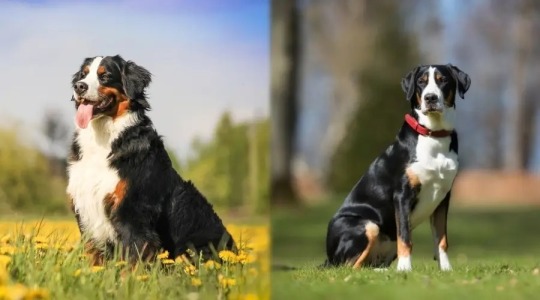
Meta Description
Bernese mountain dogs are one of four canine breeds. They are collectively referred to as Swiss mountain dogs.
What characterizes a Bernese Mountains Dog from a Bigger Swiss Mountain Dog?
When adding the component to your extended family. Are you thinking of a Swiss Mountain Dog or a Bernese Mountain Dog? Let's examine the distinctions and parallels between these two outstanding breeds.
The Greater Swiss Mountain Dog has its origins in Julius Caesar's war canines. Which he used to lead his forces across the Alps in an attempt to bring down Europe. These dogs, inherited from Cesar's mastiff dogs, were employed by the Swiss. To pull carts filled with dairy and meat goods up the mountains to the marketplace. Their journey has become known as "the destitute male horse" as a result.
Although Switzerland has produced numerous amazing dog breeds. None is certainly as well-known as the enormous, tricolored Bernese Mountain Dog. These stunning and loving canines are easy. Recognized by their striking markings and size, they are well-suited for hard work. However, there is another Swiss breed that shares its cultural roots and appearance. People occasionally mistake the Greater Swiss Mountain Dog, a devoted. And powerful member of the Working Group, for a Bernese. Continue reading to find out how to distinguish between these two Swiss Alps dogs.
Closely linked to the Greater Swiss, the Bernese Mountain Dog is native. To an area of Switzerland well-known for its chocolate and cheese. The Bernese were employed for both livestock and pulling. Both are Saint Bernard and Rottweiler foundation breeds.
A Short History of The Bernese Mountain Dog
The Appenzeller Sennenhund, Entlebucher Mountains Dog, Greater Swiss Mountain Dog. Bernese Mountain Dog are the four representatives of the tricolored species. Of Swiss mountain dogs. In the past, Swiss Mountain dogs served as general-purpose farm dogs. For their families, driving animals, pulling milk wagons. And keeping an eye on the property and wildlife. The Bernese Mountain Dog is thought to have originated from a mix. Of certain native Swiss mountain agricultural dogs and big old Roman military dogs. They were introduced to the region about 2000 years ago. During the Roman conquest of Helvetia (modern-day Switzerland). Large canines with exceptional power and endurance were the product of the cross.
Some referred to them as the Clydesdales of the canine world because of their skill at carting. The Bernese Mountain Dog was originally named the Durbacher after a location. Where the breed's predecessors were most prevalent and preferred. Has a lengthy and fascinating history. They were also referred to as Berner Sennenhunde. Which means "Mountain Pasture dog of Berne" in German. Eventually, the Canton of Berne, a region in Switzerland. Where the type of dog originated, came to be renowned.
In the past, there were many Bernese Mountain Dogs in their own country. Still, the breed's popularity started to decline. It was almost eliminated in the middle of the nineteenth century as a result of changes. In agricultural technology. And a lack of official initiatives to breed. Nonetheless, the breed was saved from extinction by Professor Albert Heim and Swiss cynologist Herr Franz Schertenleib. The popularity of the Bernese Mountain Dog started to rise gradually. Farmers from all over the region began bringing their Dürrbächler dogs to dog shows. At the beginning of the 20th century, they also took part in breeding initiatives to improve the breed. The Schweizerischer Dürrbäch-Klub was eventually established, and the breed's standard was created. It was later established that the proper moniker given to the breed is Berner Sennenhund, and this continues to be how the breed is known in its country of origin. The Bernese Mountain Dog, or BMD as it is called in the West, is one of the most widely recognized breeds in all of humanity today.
An Overview of the Greater Swiss Mountain Dog's History
The Greater Swiss Mountain Dog originated from Mastiff-type canines that were employed 2000 years ago in Roman armies. Out of the four varieties of Swiss Mountain Dogs, they are the biggest and the oldest. They were developed to drive livestock, serve as security dogs, and be draft dogs. Before two specimens were given to Dr. Albert Heim, who identified the breed and had it registered with the Swiss Cynological Society in 1909, this breed was on the edge of destruction in the late 1800s. The Fédération Cynologique Internationale released the first standard in 1939. Because of their dependable, peaceful nature, these dogs are now mostly bred for relationships, but they were once valued for their ability to protect.
Comparable appearance and place of origin
Under the prefix Nashem, Sara Karl, an AKC judge and the AKC representative for the Bernese Mountain Dog Club of America, has been producing and exhibiting Bernese since 1986. "Only when the Berner is removed from coat," she responds when asked if people frequently mix up the Bernese Mountain Dog and the Greater Swiss Mountain Dog.
The primary similarity between the two breeds, according to Karl, who has bred over 100 leaders, performance-titled Berners, and two National Specialty winners, is their physical characteristics and traditional purpose. They are equally enormous breeds of canines in black, red, and white. They are both Swiss canines that were created to be used for pushing carts filled with products to markets.
However, Liz Coit, an AKC breeder of excellence and member of the Greater Swiss Mountain Dog Club of America, pointed out that the Berner is a more popular breed than the Swissy and, therefore, more recognizable to most people. Frequently, people inquire as to whether the Swissy is a Berner or, better yet, a shaved Berner. Naturally, when a Swissy is a puppy, it's frequently mistaken for a Beagle, and when it's an adult, for a Saint Bernard. Therefore, I believe the problem is the Swissy's unfamiliarity with the wider population.
Coit, who owns three Swissies, among them Shine, the 2020 Ambassador of the Breed winner, concurs that the breed's appearance and background as farm dogs are similar. Regarding both breeds, she states, "They are recognized for their eye-catching tricolor coats and attitude." They have gone to market and greeted friends and customers who visited the farm, despite being incredibly committed and devoted to their families. Both act as watchful guards, alerting the family to any imagined threats or even just a shift in the wind's direction.
Variations in Coat and Character
Even though many confuse the Swissy for the Berner, there are distinct structural differences. The Greater Swiss Mountain Dog breed guideline states that male Swissies should weigh between 115 and 140 pounds and have a shoulder height of up to 28.5 inches. Male Berners can grow to a height of 27.5 inches and weigh between 80 and 115 pounds. They are slightly smaller than other breeds.
Another notable distinction between the breeds is their coats. While the Swissy has a smaller double coat, the Bernese has a longer one. As Coit notes, both have a dense undercoat, thus a significant amount of shedding is to be expected. She goes on, saying, "There are some differences between the Swissy and Berner standards, such as the markings (which are brown and white) and head form. Compared to Berner breeders, we are more tolerant of marking diversity in Swissies, and naturally, our coat is not as defining a characteristic as it is in Berners.
The Swissy has a more intense industrial temperament than the other breed, even though both are friendly with youngsters and devoted to their families. While the Swissy breed standard refers to them as "alert and vigilant," the Bernese Mountain Dog breed regulation characterizes Berners as "alert and good-natured." Furthermore, the questioning Swissy is more eager to make strangers with new individuals than the aloof Berner. Karl claims that while both are straightforward to train and get along well with people, "Bernese are a little sweeter than the Greater Swiss."
Dedicated and Caring for Dogs
In the Swiss region of Bern, the Berner breed of farm dog was developed for all-around use. Karl claims that farmers employed them for farm security, pulling carts of milk and cheese to markets, and moving milk cows from a particular pasture to another. Possibly because of their history of collaborating closely with farmers, this kind and affectionate breed is committed to its family.
Karl believes that the breed's attributes of beauty, stockiness, and love apply to them. She claims that having a Berner requires a lot of hair loss. She recommends leather seating and an excellent vacuum. She claims that although these dogs enjoy going on walks and travels and enjoying the cold, they don't enjoy being left outside by themselves for long periods. They are also adversely affected by hot temperatures. Although they may survive in warmer climates, you should keep them out of the sun during the hottest parts of the day.
According to Coit, among the Sennehund breeds (Swiss mountain dogs), the Swissy is one of the oldest and biggest. They were also bred to be all-purpose farm dogs, trained to perform duties including herding, transporting milk carts, driving livestock to markets, and simply keeping an eye on the home and property. The Swissy's harsh bark of caution and alertness serves as a sentinel, a legacy of its guardian pedigree.
Like their breed, they are devoted and caring and yearn to be with the people they love. According to Coit, as long as they have long walks in the morning and at night, they are content to laze around all day rather than being busy dogs. They will love it too, though, if you educate them on how to do drafts or herd or take them climbing every day. Since they were bred as shepherd dogs, they tend to gather kids, thus it's critical to teach them how to walk on a slack connection.
For experienced owners or owners prepared to learn everything these huge breeds demand, both types may make wonderful companions. To ensure that the pet you take home is fit and well-bred, though, do your homework on prospective breeders. Karl recommends using Bernergarde.org to look up possible breeders of Berners. And now you can recognize the differences between these strong Swiss breeds, should you be lucky enough to meet one, regardless of whether they're the ideal fit for you.
Lifestyle, Instruction, and Temperament
Because of their affectionate nature and commitment to their families, both kinds are highly valued. In terms of stature and disposition, the Swiss are a little more threatening. They are devoted guardians who are a little darker in spirit but not unfriendly. These strong dogs tend to go through the puppy stage more slowly, and they have a booming bark that your neighbors could not enjoy. Due to their size, they may test a parent's tolerance throughout this protracted puppy stage. At 100 pounds, their ungainly, awkward bodies might make bumps and huge paws too much for them to handle.
It's well known that Bernese Mountain Dogs are more reserved, easygoing, and extremely mindful of their body language when around young children, much like a teddy bear. Although both breeds make wonderful family pets, the Bernese would prevail in the Gentle Giant battle over the Swiss.
Instruction
When it comes to training, food is a terrific motivation to assist teach positive habits in Swiss Mountain Dogs, which can be a bit more resistant , and should start training young. They pull stronger when wearing a safety harness throughout leash training and don't react well to them unless they are being hauled.
Similar to Swiss dogs, Bernese are intelligent canines that are more motivated to please their owners. They are more vulnerable to criticism and separation because of their loving disposition. If they are left alone for extended periods, they will exhibit undesirable behaviors because they would like to be with the family.
Work out
Both breeds need an average amount of daily activity. They work well for owners who enjoy taking their dogs for peaceful walks or hikes in the outdoors, but they are not the best fit for serious bikers and joggers who like training alongside their pets. Both make excellent camping dogs, and they can even tow children and camping supplies in a wagon.
Every day, the Berner and the Swissy require one hour of exercise. Whether or whether there is snowfall on the ground makes no difference in fact, they would both like it. They require long, leisurely walks through the nearby park or natural reserve because they are big dog breeds. They both enjoy being outside and will develop cabin fever if kept indoors for an extended period.
Due to their huge bodies and joints, neither one of them should be trained aggressively while they are puppies. The best course of action is to completely avoid physically demanding tasks because too much pressure can lead to abnormalities in development.
With less social engagement during the day, the Berner is the more relaxed pup. When his loud breaths begin to reverberate throughout the home, you will know that he is content to nap for a few hours. The Swissy requires a lot more company during the day to get rid of his excess energy. Consider harder play sessions, difficulties, and the requirement for long-lasting dog toys.
Well-being & Health
Neither the Swiss nor the Bernese Mountain Dogs are known to have any breed-specific illnesses, making them both generally healthy dogs. However, they are prone to health concerns like elbow, neck, shoulder, and hip joint troubles that often affect larger species. Nevertheless, their musculoskeletal health generally looks good overall. Additionally, bloat is a serious medical condition that can affect any large breed; owners just need to understand what to watch for.
The American Kennel Club advises evaluating puppies for eye health issues in addition to elbow, shoulder, and hip dysplasia. AKC additionally suggests a Von Willebrand's (clotting) Disease DNA test for Bernese, especially. The Swiss Mountain Dog lives eight to eleven years, while the Bernese Mountain Dog lives between seven and ten years.
Grooming and Weeping
Possimply the most noticeable distinction between the two breeds is this. Compared to Swiss dogs, Bernese wear longer, thicker coats, which means they need more maintenance. Naturally, Bernese shed continuously, but their lengthy outside coat and wooly underneath shed severely twice a year. To maintain a glossy and healthy coat, Bernese needs to be brushed once a week all year round and every day during shedding seasons. Owners may occasionally need to use an iron comb or toothbrush to untangle their fur because of its longer length.
Conversely, the Swiss have lower standards for grooming. They require less care and have a double coat as well. A blowout of the overcoat twice a year throughout periods of greater shedding would be beneficial to them. A periodic bath and brushes, however, maintain the Swiss looking well.
Nourishment
Every day, the Berner will drink from three to four cups of food, whereas the Swissy will drink four to five cups. Their age, size, and level of energy all affect how much they eat. They are both prone to rapid weight gain, particularly the Berner with his easygoing disposition, so watch out not to overfeed them. You must closely monitor their dietary consumption since obesity may compound existing health issues.
Both of them needed to be provided with a premium diet that offered them well-balanced nutrients. An excellent meal consists of genuine livestock meat, carbohydrates, fiber, healthy fats, calories, and elements. Two other crucial components to look out for are chitosan and ibuprofen since they will preserve their enormous joints.
Since they are both huge breeds, they should be provided kibble made especially for them, especially in their puppy years when their development is very quick. These will have the ideal balance of nutrients that they require. This is especially crucial while the project is still under development. According to research, they can aid in delaying or preventing bone problems that both breeds have a susceptibility to, such as elbow, shoulder, and hip dysplasia.
Conclusion
In conclusion, the background, appearance, personality type, and care needs of the Bernese Mountain Dog and the Greater Swiss Mountain Dog are comparable and differ from one another. As tricolored Swiss mountain dogs, both breeds have a long history of being used as adaptable farm dogs in Switzerland.
Originating in the Swiss Alps and the Roman military, the Bernese Mountain Dog saw a drop in appeal in the 19th century before being saved from extinction by committed individuals. Conversely, the Greater Swiss Mountain Dog, which originated from Mastiff-like canines utilized in Roman forces, was nearly exterminated in the late 1800s but was subsequently acknowledged and documented.
There are noticeable variations in height, coat length, and disposition between the two breeds, despite their remarkable tricolor coats and kind dispositions. The Bernese Mountain Dog is characterized as being more reserved and laid-back, and it tends to be somewhat smaller with a longer coat. In contrast, the Greater Swiss Mountain Dog is bigger, has a thinner fur, and possesses a more industrialized temperament characteristic.
FAQs
What makes a Bernese Mountains Dog different from a Bigger Swiss Mountain Dog?
Size, coat length of sentence, and personality all differ. The Greater Swiss is bigger, has a thinner coat, and tends to be a more intense dog than the Bernese, which is somewhat smaller and has a longer coat.
What is behind each of these dog breeds from the Swiss mountains?
Both breeds began life as adaptable farm dogs in Switzerland; the Greater Swiss descended from Mastiff-type hounds used in Roman legions, while the Bernese mixed military and native Swiss dogs.
What prevented the mountain dog from Bernese from going extinct in the nineteenth century?
By starting breeding programs and creating breed standards, Professor Albert Heim and Swiss cynologist Herr Franz Schertenleib were instrumental in preventing the wiped out of the Bernese Mountain Dog.
Do their looks and functions resemble each other?
It's true that both breeds have multicolored coats and were intended for farm work, such as pushing wagons full of produce to marketplaces in the Swiss Alps.
#Bernese Mountain Dog#bernese australian shepherd mix#bernese mountain dog puppies#bernese poodle mix#Petinfosite#lebanese dog#gentle giants dog food#mini bernese mountain dogs#full grown mini bernedoodle#bernese mountain dog poodle mix#bernese mountain dog golden retriever mix#bernese mountain dog rescue#when to stop fighting mast cell tumors in dog#mini bernedoodle full grown#miniature bernese mountain dog#pictures of mast cell tumors in dogs#bernese mountain dog mix#bernese mountain dog life expectancy#do bernese mountain dogs shed#bernese mountain dog poodle#bernese mountain dog and golden retriever mix#rescue a bernese mountain dog#bernese mountain mix poodle#how big do bernedoodles get#bernese mountain dog shedding
1 note
·
View note
Photo
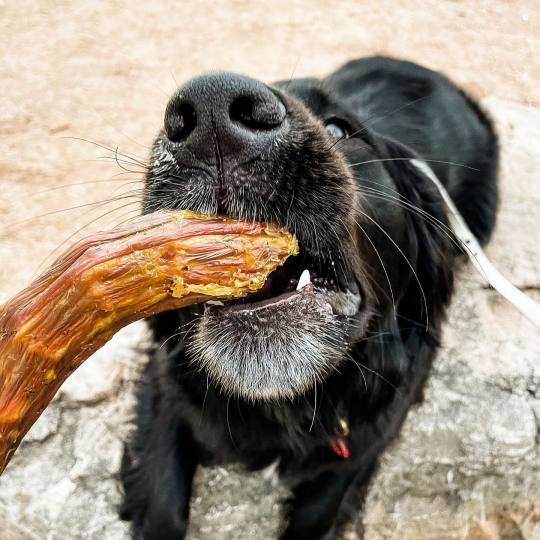

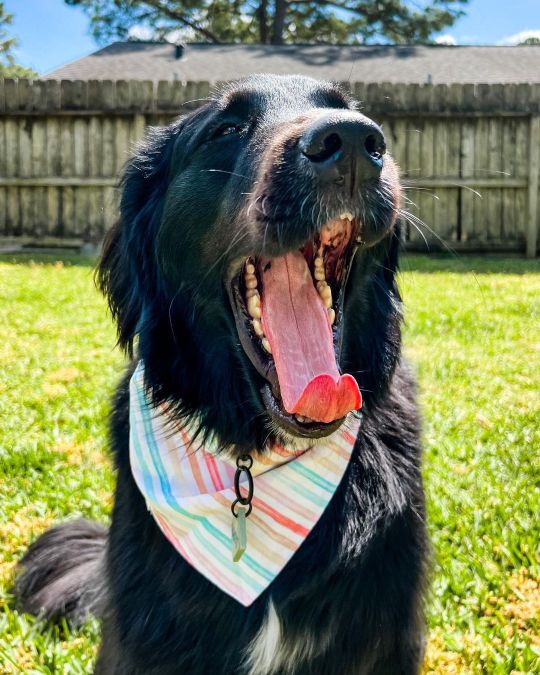
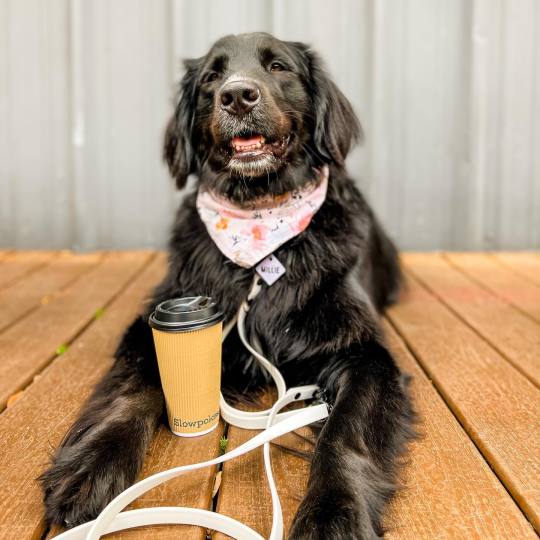


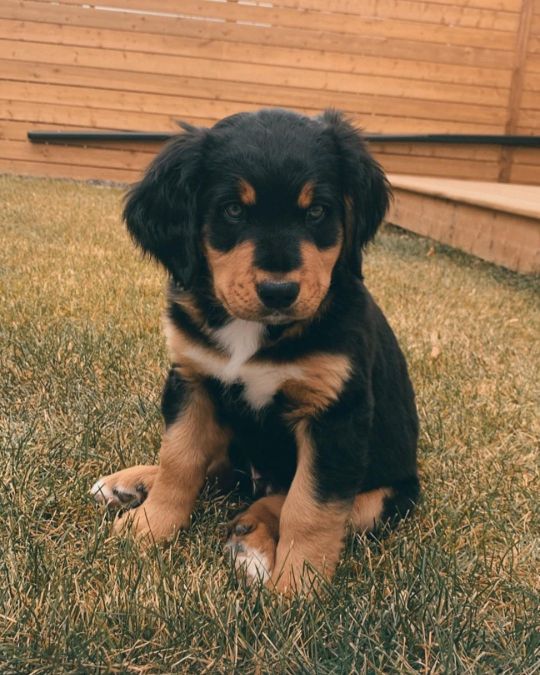


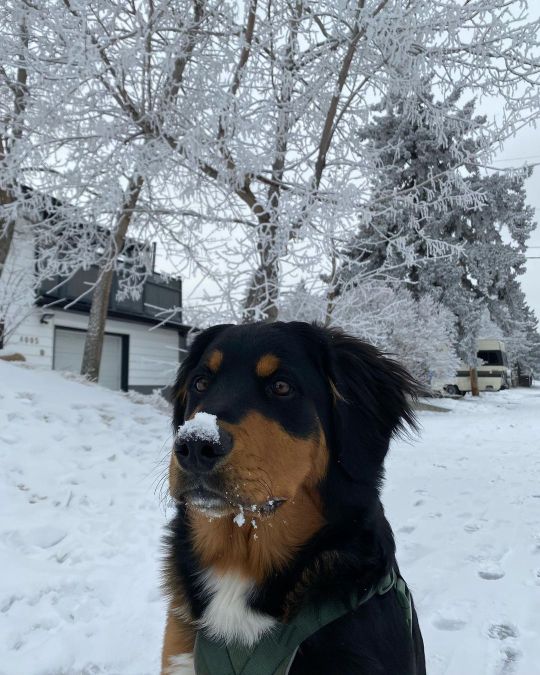
Con lai của Bernese Mountain Dog và Golden Retriever là một giống chó hiền lành, thân thiện và thông minh. Đọc bài viết để xem liệu Golden Mountain Dog có phù hợp với gia đình bạn không! https://hanhtinhpet.com/golden-mountain
#bernese mountain dog#bernese mountain dog mix#Golden Retriever#Golden Retriever mix#Golden Mountain Dog
1 note
·
View note
Text

Slightly odd angled floor time of Ashe and her dog:3
#I can’t remember exactly what breed Bizly said it was but I think it was a Rottweiler#I’ve been thinking of it as a Rottie and Bernese Mountain mix#for like no reason#I know for a fact they’d have a real big dog though#don’t ask me why#just beleive me#I don’t actually care for this drawing much but I love doodling Ashe and her puppy so rgehsjdhdjd#jrwi#jrwi pd#prime defenders#ashe winters#jrwi fanart#jrwi prime defenders#jrwi pd fanart#moomins gallery<3
105 notes
·
View notes
Text

One happy Bernese!
#dogs of tumblr#puppies#dogs of the internet#for the love of dogs#austrailian cattle dog#mixed breed#fosteringsaveslives#sharpei#husky#dogs#bernese mountain dog#doggie daycare
198 notes
·
View notes
Text

tounge
#her name is roxanne and she is 2yo#border collie#bernese mountain dog#border collie mix#bernese mix#dogs#doggo#silly dog#she's my mom's dog and she is a SWEETHEART
83 notes
·
View notes
Text
EVERYONE STOP WHAT YOURE DOING !!!!!!!!!!!!

OUR LOCAL CAT DAD, JACK, GOT A FUCKING DOG AND IM LIVING FOR THIS BABYYYYYYYY
#LOOK AT THAT LIL FACE#HES A GOLDEN RETRIEVER AND A BERNESE MOUNTAIN DOG MIX#YES YES GIVE ME MORE DOG CONTENT#jack campbell#toronto maple leafs
113 notes
·
View notes
Text

He makes Rogue look so small
22 notes
·
View notes
Text
New client Charli is giving S’mores a real work out. The boy never stops moving!
4 notes
·
View notes
Text
Discover How Weighted Jackets for Dogs Can Help Get Fit A Complete Guide

Meta Description
Find out how your dog's exercise regimen might be changed using weighted jackets. Discover the best practices for choosing, introducing, and combining weighted jackets for dog performance and health.
Exploring the Weighted Jackets for Dog Fitness
Weighted jackets are an original method that the dog fitness industry is now improving the physical fitness and general health of dogs. These specialty clothes are intended to provide focused friction during exercise, which successfully turns ordinary activities into active exercises.
They are much more than simply a statement of style. The use of weighted jackets has become an effective means for reaching measurable fitness objectives as dog owners look for methods to maximize the workouts of their animal friends.
Understanding the potential advantages of weighted jackets for our dog friends requires an understanding of the science behind them. Through an examination of how these jackets affect dog biology, including muscular growth, improved endurance, and heart function, we may better understand their usefulness as instruments for boosting peak fitness.
Furthermore, by using appropriate security measures and progressive introduction methods, dogs may benefit from weighted jacket education without jeopardizing their well-being.
The Weighted Jacket for Dogs Scientific Basis
Heavy dog jackets are made with extensive knowledge of pup biology. These specialty clothes have a function based on the laws of physics; they are more than just clothes to wear. We can understand how weighted jackets affect a dog's biology and how they might improve general health and fitness in dogs by learning more about these systems.
Effect on the Biology of Dogs
When a dog moves, weighted jackets provide a regulated amount of pressure to their body, causing different biological responses.
Muscle Construction
As the dog rotates, the extra weight these jackets give causes a greater level of muscle involvement across various muscle groups. Increased muscle activity serves as a kind of workout that is similar to what is seen in sports. Increased muscular growth, power, and tone may result from this over time.
Bone Size
Weighted jackets may benefit bone health in addition to muscular growth. More weight on the bones promotes development and reshaping especially in weight-bearing bones.
This feature is especially helpful for puppies going through the developing period or for seniors who want to maintain the strength of their bones and avoid age-related problems like bone loss.
Attitude and Body Knowledge
Dogs with weighted jackets often have a better awareness of themselves and their attitude. They have to modify their center of pressure and balance due to the additional weight, which improves their sense of balance and awareness of space.
This feature is especially helpful for dogs with bone issues or those undertaking rehabilitation from injury since it promotes regular exercise and lowers the chance of falls or other accidents.
Impacts on Performance and Muscle Growth
Muscle Stimulating
Compared to standard exercise alone, the effort offered by weighted jackets boosts a wider variety of muscles. By fostering a more balanced muscle, this complete engagement lowers the chance of problems that may result in injuries or incorrect movement.
Furthermore, regular muscle activation across the body enhances general strength and practical movement behaviors.
Improvement of Durability
Dogs' ability to endure often becomes better as they get used to the extra weight of the jacket. Exercise increases the burden on the circulatory system and muscle tissue, which leads to this improvement in durability. Dogs are better at using oxygen and energy as they age, which enables them to engage in exercise for extended periods without becoming tired.
Benefits for the Metabolic System
Exercises involving increased resistance, such as wearing weighted jackets, might cause changes in metabolism. Exercise may cause dogs to burn more calories, which helps them maintain a healthy weight and metabolism.
Furthermore, increases in insulin tolerance and glucose management may result from the increased metabolic effort experienced during weighted exercise sessions, which may lower the risk of metabolic illnesses like diabetes.
Knowing these complex biological effects makes it clear why weighted jackets are a recommended addition to dog exercise programs. But it's important to utilize them carefully, taking into account the unique qualities of each dog, such as age, species, and general health.
Seeking advice from medical professionals may be very helpful in making sure that weighted jacket teaching is secure and advantageous for every individual dog partner.
Selecting the Ideal Weighted Jacket
It's important to take into account several requirements while choosing the right weighted jacket for your pet. Not all weighted jackets are made equal, and selecting the ideal one requires weighing several factors to guarantee both effectiveness and safety while in use. Here's a detailed look at the things to think about before getting your pet a weighted jacket:
Things to Think About Before Buying
Weight Spread
Your dog's safety and well-being are greatly dependent on how the jacket distributes its weight. Seek for coats that disperse the extra weight across the entire body instead of putting it all in one place.
Uneven distribution of weight may cause pain, strain on muscles, or even damage, especially when wearing something for a long time or performing severe activities.
Flexibility
Choose a weighted jacket that is flexible and can be adjusted for both fit and burden. This lets you adjust the force to suit your dog's demands, level of health, and training objectives.
As your dog becomes stronger, you may alter the degree of the training by adding or removing weight packs from the jacket or adjusting the straps.
Component Excellence
Evaluate the jacket's building materials' quality. Strong, breathable materials are necessary for enduring constant use and allow for proper ventilation while working out. Should you want to use the jacket in environments where dealing with moisture is a problem, look for fabrics that are fast to dry or water-resistant.
Take into account how simple it is to clean and maintain the jacket as well to make sure it stays odor-free and safe over time.
Safety Features
To improve awareness and reduce hazards while engaging in outdoor activities, give priority to jackets with safety features. Low-light visibility is improved with shining strips or high-visibility voices, which lowers the risk of crashes or errors. When engaging in intense motion, secure fasteners like hook-and-loop fasteners or flexible belts keep the jacket from sliding or falling loose.
Connectivity with Straps and Leads
Verify that the weighted jacket is appropriate with the straps and straps you already own if your dog uses them for walks or training sessions. To ensure easy integration without sacrificing comfort or utility, look for coats with incorporated leash connection points or harness-compatible patterns.
Challenges for Size and Comfort
Proper Evaluation
To get the right jacket size, take precise measures of the dog's physical dimensions. Calculate the neck diameter, the distance from the lowest point of the head to the tip of the hair, and the length around the upper body to ensure a proper fit.
It is advisable to avoid making selections based just on weight divisions since dogs of the same weight might have different body forms and measurements.
Comfort and Flexibility of Motion
When choosing a weighted jacket, give special consideration to feel and range of motion. Make sure the garment fits your dog comfortably and properly without limiting its range of motion. Focus on important regions like the abdomen, chest, and shoulders where pleasure and maximum performance depend on being able to move.
Sample Adapting
Before investing, wherever feasible, let your dog test on the weighted jacket. This enables you to personally evaluate the fit and level of ease and make the necessary changes. When your dog wears the jacket, pay attention to how they move and behave to make sure there are no symptoms of pain or limitations.
Through careful consideration of these variables and thoughtful selection of the ideal weighted jacket, you can optimize your dog's training experiences and successfully promote their fitness objectives. To make sure that you and your dog have a good and happy time, keep in mind to put security, pleasure, and usefulness first.
Rules for Wearing Weighted Jackets in a Safe Way
Although there are many advantages to using weighted jackets for your dog's training and fitness, it is crucial to make sure they are safe while wearing them. Following the necessary security measures not only shields your dog from any danger but also optimizes the success of their training program. An extended look at safety factors for wearing weighted jackets is provided below:
Appropriate Distribution of Weights
Equal Load Delivery
Make sure your dog's body receives the additional weight from the weighted jacket in a fair way. An equal load distribution reduces the chance of strain or damage to certain joints or groups of muscles. In addition to encouraging typical motion patterns, this healthy distribution lessens the chance of pain or fatigue.
Ideal Weight Picking
Considering your dog's size, species, age, and level of fitness, choose a weighted jacket with an acceptable weight level. Gently increase the weight as your dog turns used to wearing the jacket; start with one that is thinner. Don't go beyond advised weight limitations to save your dog's skeletal system from excess stress.
Customized Weight Selections
Select a weighted jacket that lets you adjust the amount and location of the weight. You may customize the durability of a jacket to meet the individual demands and training objectives of your dog by adding or removing weight packs or adjusting sections. This flexibility guarantees that the exercise your dog gets is safe and appropriate for their level of ability.
Meeting with an Expert
When choosing a weighted jacket for your dog, get advice from an authorized vet or professional pet fitness trainer. These experts may provide specific guidance depending on the special qualities of your dog and any deeper medical problems.
Speaking with professionals guarantees that, to protect your dog's health, you make well-informed choices on weight choosing and use.
Observing Measures of Fear or Exhaustion
Watchful Evaluation
While your dog is wearing the weighted jacket, pay special attention to their actions and body language. Keep an eye out for any indications of anxiety, such as hunger, heavy panting, or anxiety, since these could mean that the weight level is too difficult or that the jacket is making you uncomfortable.
Subtle Indicators
During exercise sessions pay attention to any slight shifts in your dog's position, stride, or overall attitude. Fatigue symptoms, such as falling behind, not wanting to go on, or losing interest, should be addressed right once and may call for a change in the training plan or a break.
Reaction to Touch
Your dog's sense of security and any areas of stress or pain may be noticed by gently feeling their joints and muscles. Examine how your dog reacts to touch and take note of any sensitive or uncomfortable behaviors that can point to strain or overwork.
Clear communication
Clear communication is essential to determining your dog's sense of security and readiness to continue learning. Make sure you are communicating with the animal. Encourage your dog to use loud signals, such as "easy" or "slowly down," to indicate when it's time to take pauses or lighten up on activity.
To protect your dog's safety and well-being, fast respond to their indications and modify the program as necessary.
Resting and Healing
Give yourself plenty of time to relax and recover in between weighted jacket workouts. By allowing your dog's tissues to heal and adjust to the increased activity, proper sleep intervals reduce the likelihood of stress problems, muscular strain, and feeling tired.
To encourage the best possible healing and avoid compound fatigue include rest days in your dog's training program.
A safe and joyful training session may be guaranteed by following these extensive safety instructions and paying great attention to your dog's reaction while wearing a balanced jacket.
Put your dog's support, health, and longevity first to get the most out of weighted jacket education. While lowering the possibility of pain or damage. Keep in mind that getting the results you want and building. A solid relationship with your dog partner needs patience. Tenacity, and careful attention to detail.
How to Give a Weighted Jacket to Your Pet
Teaching your dog to a weighted jacket is a long process that takes patience. Encouragement, and careful consideration of your dog's health and flexibility. Your dog may get used to wearing the jacket with ease and confidence. If you use training methods that focus. On encouragement and progressive introduction.
Techniques for Gradual Overview
Knowledge of the Jacket
Start by letting your dog grow comfortable wearing the weighted jacket in a comfortable, stress-free environment. Place the outerwear near your dog's blanket or favorite resting location. Enabling them to inspect and smell it during their time off. To help you form pleasant connections with the jacket, give it some treats and attention.
Brief Wear Periods
Begin with brief, monitored wear periods of the weighted jacket, increasing the length over time. Initially, simply put the coat on for the dog for a few seconds at a time to avoid upsetting them. Take advantage of these quick sessions to see how comfortable. Your dog is wearing the jacket and how they react to it.
Attractive Organizations
To encourage the desired behavior, link wearing the jacket to enjoyable events and incentives. When your pet wears the jacket, give them food, praise in words, or their favorite toys. To help them form a good relationship with the item. When sporting the jacket, your dog will feel more at ease and self-assured thanks to this beneficial reinforcement.
Progressive Weight Furthermore
When your dog is satisfied wearing the jacket for a long time, gradually add weights to the garment in stages. Start with lesser weight packets or fewer weights, then raise the effort. As your dog grows adjusted to the increased burden. Keep a careful eye on your dog's reaction and modify the weight level as necessary.
Exposure Training
Use reduction methods to make your dog accustomed to the feeling of wearing a heavy jacket. Carefully touch and touch various sections of the coat, gradually adding the feeling of weight and stress. Pair these encounters with prizes and praise to build a favorable connection with the jacket's feel.
Effective Reinforcement Teaching Methods
Reward-Based Learning
To get your dog to put on the heavy jacket voluntarily, use reward-based methods for training. Offer sweets, praise, or favorite things as rewards for using the jacket and showing calm, friendly conduct. Rewarding behavior encourages your dog to participate gladly in the desired activity.
Implement Clicker
Implement clicker methods of training for enhancing the good behaviors connected to donning the weighted jacket. When a desired behavior like sitting or standing still while wearing the jacket. Marked with a clicker, it can be rewarded with a reward.
Using the clicker consistently aids in behavioral change and learning by letting your dog know which actions are rewarding.
Gradual Lighting
Slowly subject your dog to sporting the weighted jacket in different circumstances and during varied activities. Once you've mastered low-stress situations like wearing the jacket inside. During quiet times you can move on to more challenging settings and activities. Regular use allows your dog to develop trust as well as relax while wearing the jacket in different situations.
Tolerance and Uniformity
Show patience as your dog makes improvements and remain steady in your training methods. It took time for City to be created, and the same is true. For your dog's transition to a weighted jacket. Celebrate little successes and development goals. Prepare to change your training techniques. Required to meet your dog's specific requirements and preferences.
Terminate with a Positive Note
Despite the result, always conclude training sessions with an upbeat mood. Take off the jacket and give your dog love and reward if they show indications of stress or pain. Ending on a good note helps sustain your dog's excitement and drive for future exercises.
Your dog can learn to wear a weighted jacket with ease and trust if you use methods of instruction. That involves gradual introductions and encouragement to succeed.
Throughout the training phase, keep in mind to be cautious, consistent, and aware of your dog's needs. You should also celebrate each progress your dog makes toward greater health and fitness.
Conclusion
As the study of weighted jackets for dog fitness comes to an end. These cutting-edge devices have huge potential. To improve our dogs' physical health. We've explored the research behind weighted jackets in this thorough guide. To learn more about their effects on heart health, muscular growth, and strength. Through the order of appropriate selection, growing introduction methods. And inclusion into exercise regimens, we have prepared ourselves. With the information and resources necessary. To optimize the advantages of weighted jackets for our animal friends.
The adaptability of weighted jackets provides plenty of opportunities for enhancing our dogs' fitness activities. From strengthening and conditioning to enhancing heart function. Weighted jackets offer an active edge to ordinary activities, turning them into planned exercises.
Whether you're walking rapidly, training speed, or enjoying the great outdoors. By providing our dogs with constant training, encouragement, and careful attention. We may enable them to achieve incredible levels of wellness and energy.
During their fitness journey, we as trustworthy dog owners must always put our dogs' ease, security, and unique requirements first. We can make sure that our dogs' health adventures are not only successful but also pleasurable and fulfilling. By continuing to pay attention to appropriate weight delivery, and keeping an eye out for symptoms. Of exhaustion or pain, and creating a good training experience.
FAQs
What are dog-weighted coats and exactly how do they function?
Dogs wearing weighted jackets experience opposition throughout their activities, which improves muscular activation and the efficiency of their workouts.
What are the advantages of giving dogs weighted jackets?
They help control weight and enhance cardiac wellness, muscular strength, and durability.
Are all dogs suited for wearing weighted coats?
Not every time. Before using, particularly for pups, senior dogs, or dogs having health concerns, see the doctor.
How do You introduce wearing a heavy jacket to my dog?
Introduce the jacket slowly by giving it small wear intervals and rewards, then gradually boost its weight and length.
#Bernese Mountain Dog#bernese australian shepherd mix#bernese mountain dog puppies#bernese poodle mix#Petinfosite#lebanese dog#gentle giants dog food#mini bernese mountain dogs#full grown mini bernedoodle#bernese mountain dog poodle mix#bernese mountain dog golden retriever mix#bernese mountain dog rescue#when to stop fighting mast cell tumors in dog#mini bernedoodle full grown#miniature bernese mountain dog#pictures of mast cell tumors in dogs#bernese mountain dog mix#bernese mountain dog life expectancy#do bernese mountain dogs shed#bernese mountain dog poodle#bernese mountain dog and golden retriever mix#rescue a bernese mountain dog#bernese mountain mix poodle#how big do bernedoodles get#bernese mountain dog shedding
0 notes
Link
AUSTRALIAN SHEPHERD BERNESE MOUNTAIN DOG MIX
2 notes
·
View notes
Text
i fink i might bring cocoa back as a co-sona with daybreak now that i have a design in mind (also so my neopets username can make sense again lmao)
#dawn speaks#i've got her imagined as a bernese mountain dog + doberman mix!#two of my favorite large dog breeds hehe#i like akitas and dalmatians and other too but this is the idea that sticks out ���#today be a day for character designs mayhaps#fursona
1 note
·
View note
Text
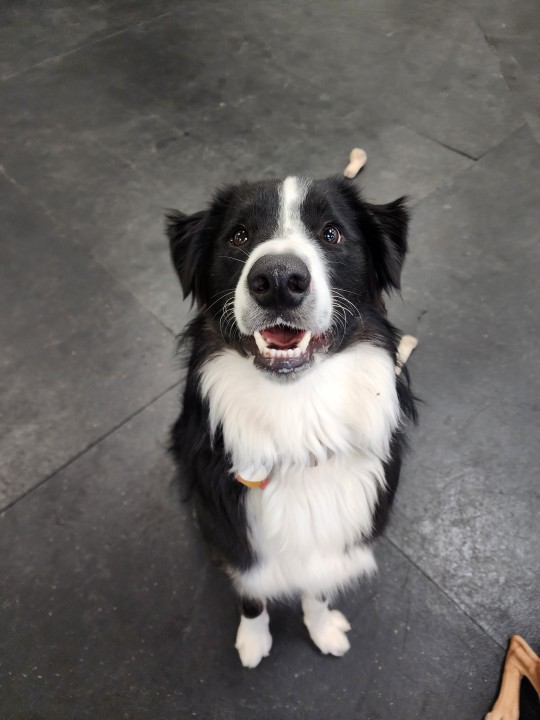


I love my job 💚
#doddy daycare#berner#bmd#bernese mountain dog#border collie#bug#dogblr#dog#generic dog#mutt#boxer mix#doggo#super mutt
1 note
·
View note
Text

E A R
#i miss this silly gal#roxanne#my mom's dog#border collie#bernese mountain dog#border collie / bernese mountain mix#dogs#pets
0 notes
Text
in my dreams which are VIVID and PLENTY
#one of the things that led to the girl shane/matty wip#was the idea of matty having a bernese mountain dog#and like look. young kid franchise center. with an adorable dog?#he's a pretty famous dog in seattle#and the puns - berniers mountain dog matty bernese etc etc#look dude's got a cute HUGE dog which is media bait ok#anyways the dog is obsessed with shane#and like i can't write about it NOW#so the. you know. the mixed media developing/secret relationship fic#has to come after i get this bad boy out the way#but yeah that is the Only Reason (well one of the only reasons)#anyways i need to do more writting less girlblogging#the google docs folder
0 notes
